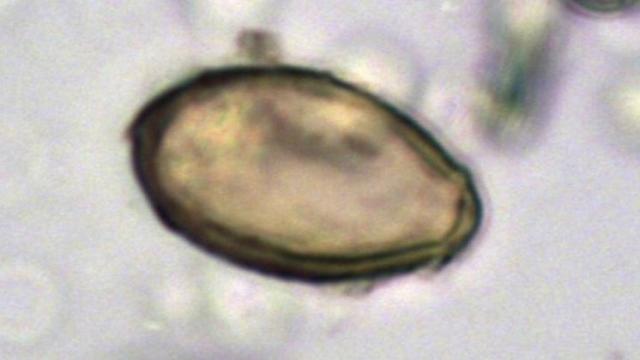As the TV show Scrubs once said, “everything comes down to poo”. This is true in sitcom land, but also in science.
Egg of a Chinese liver luke found in an ancient toilet, because science. (Image: The Journal of Archaeological Science)
When Europeans came over to the Americas for the first time, they brought all kinds of diseases: the bubonic plague, chicken pox, small pox, and tuberculosis, to name a few. Similarly, researchers of the Silk Road — a network of trade routes across China and Europe — found that travel also spread infectious diseases across continents thousands of years earlier.
Anthropologists examined 2000-year-old personal hygiene sticks (a stick wrapped in cloth used to clean someone’s butt) recovered from a latrine and popular stop located on the Silk Road in northwestern China. In a paper published in the Journal of Archaeological Science, it’s noted they found eggs for multiple parasitic worms, including tapeworm and Chinese liver fluke.
The liver fluke, which is known to cause abdominal pain, diarrhoea and liver cancer, isn’t endemic to the region where the latrine was found. According to a statement released by the University of Cambridge, the liver fluke needs damp, moist areas to survive, but the station was located near the Tamrin Basin, which is mostly known for containing the Taklamakan Desert.
The closest region the fluke could’ve come from is around 1500km away.
There was little evidence before to suggest that diseases were spread across the Silk Road, so the discovery outlines more details on this area of history, along with providing a timeline as to how diseases could’ve spread.
Researchers had only speculated that diseases such as the bubonic plague and anthrax were carried among the Silk Road, which was in use between approximately 202 BC and 220 AD. The trade route was important for the development of ancient civilizations in China, India and Europe.
“When I first saw the Chinese liver fluke egg down the microscope I knew that we had made a momentous discovery,” said Hui-Yuan Yeh, one of the study’s authors. “Our study is the first to use archaeological evidence from a site on the Silk Road to demonstrate that travellers were taking infectious diseases with them over these huge distances.”
To read more on the journey to discover the diseases of the Silk Road, read this editorial written by Piers Mitchell, who worked on the project.
